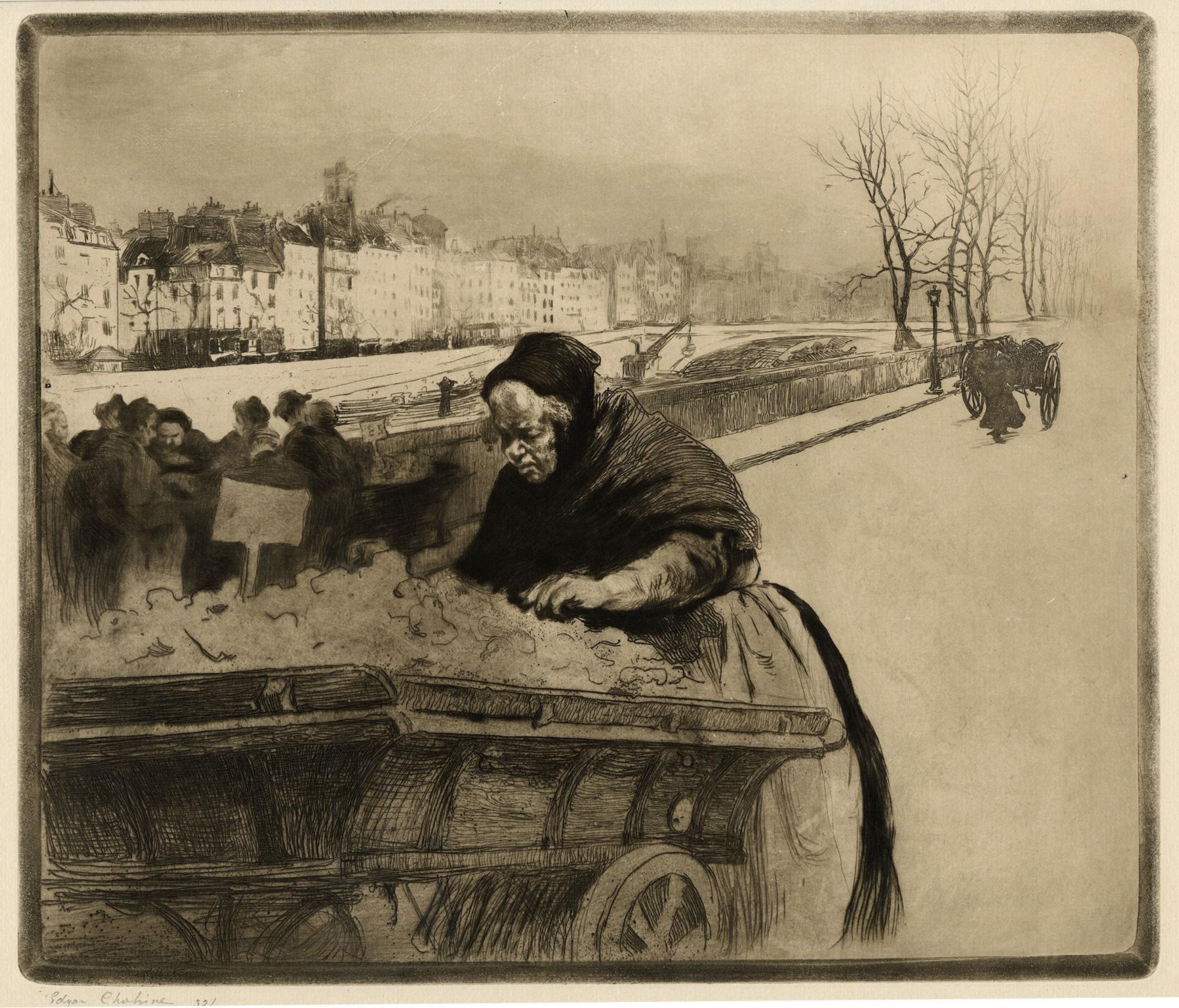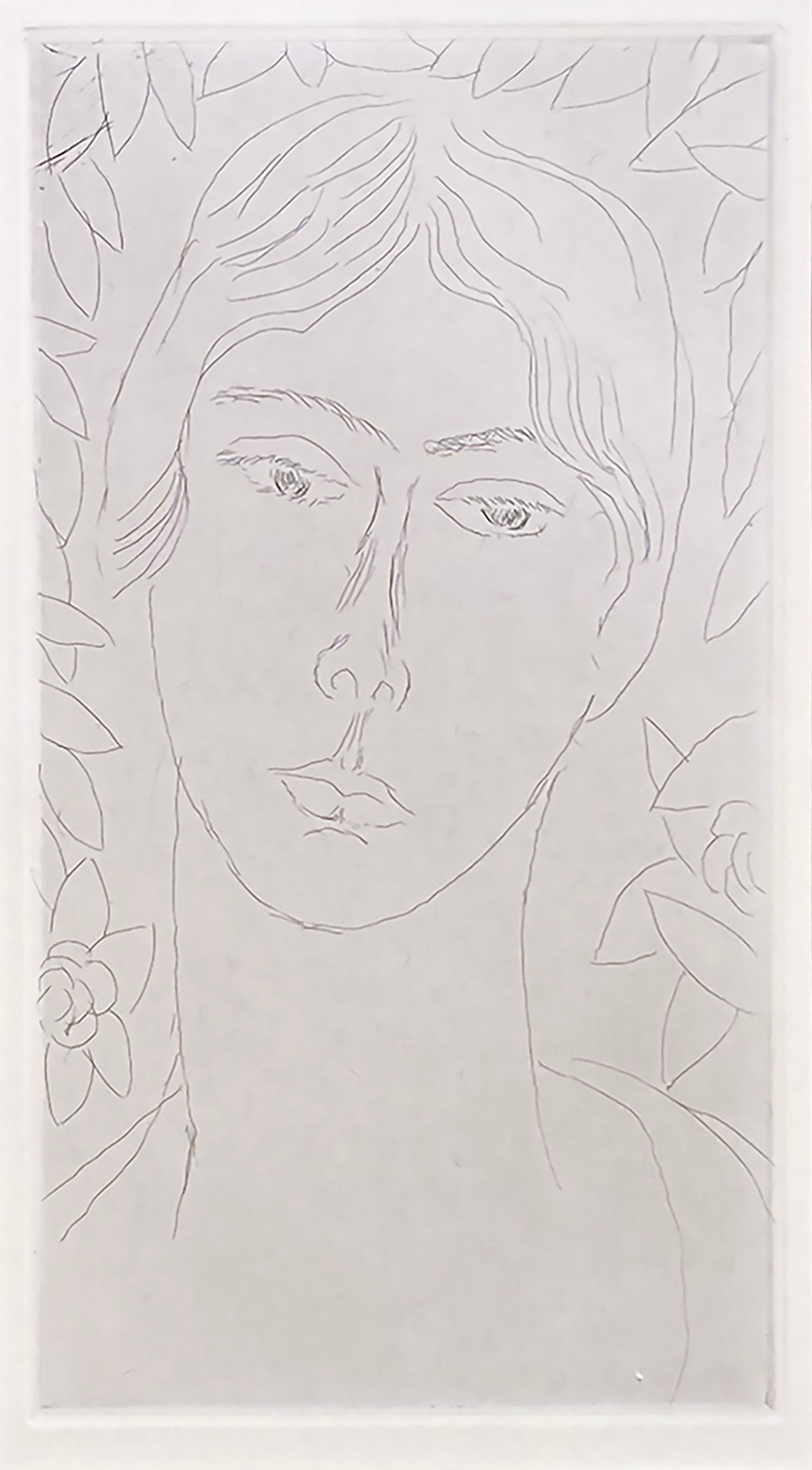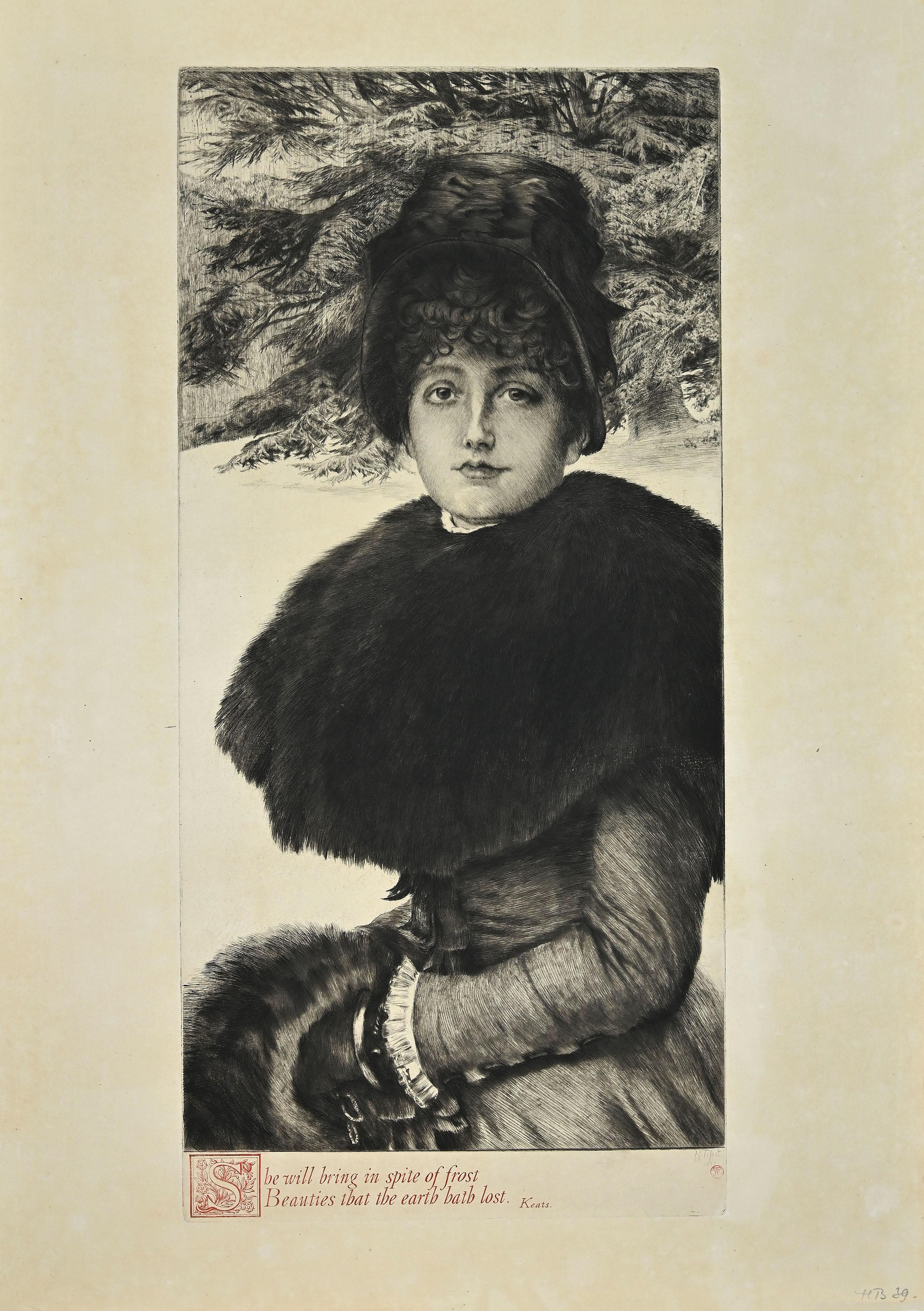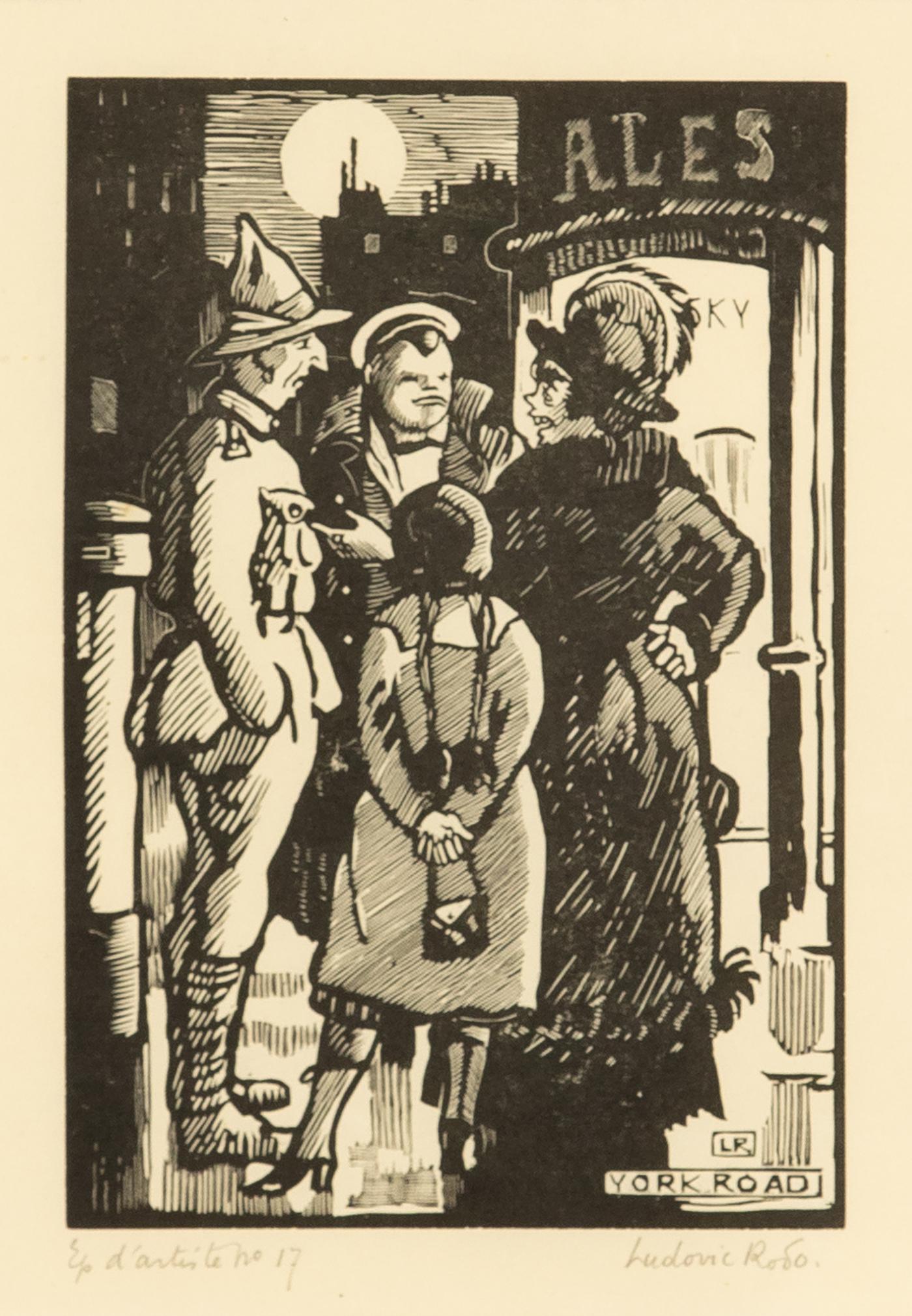Items Similar to "Dame a la Toque", fabulous drypoint etching by Paul Cesar Helleu
Want more images or videos?
Request additional images or videos from the seller
1 of 8
Paul César Helleu"Dame a la Toque", fabulous drypoint etching by Paul Cesar Helleu1906
1906
About the Item
HELLEU, PAUL CÉSAR
(1859 - 1927)
"La Dame a la Toque"
(Lady in Fur Hat)
Drypoint printed in colors on pale cream wove paper, c. 1906
Signed in black crayon lower left Signed in pencil, lower left
Full Margins, Plate Size 21” x 13 1/4”
Rich impression with dramatic drypoint burr and tone no other artist epitomizes the whole atmosphere of elegance and hedonistic pleasure which pervaded Paris society at the first decade of the century as does Helleu. A close friend of Proust and the inspiration for one of the principal characters in La Recherche du Temps Perdu, Helleu’s whole life style echoed the incomparable elegance and flow of his drawing, the sheer style of his art, and his eye for the poses of the beautiful women who were his friends and his patrons. During the 1870’s, Helleu had come to know the painters of Impressionism and also artists Sargent and Whistler who became his special friends and inspiration. By the early 1880’s, he had already developed the quality of expressive sweeping line, which is the essence of his drawing, but in 1885 he was encouraged by Tissot to try working on prints in drypoint. At this time, Tissot had decided, after the death of his lover and model Kathleen Newton, to travel to the Holy Land on an artistic pilgrimage. Having decided he would no longer engrave, he gave Helleu his diamond stylus…a literal and figurative “passing of the baton”. It was in the incision and texture of drypoint that his art was to reach one of its greatest peaks. He had an innate feel for the balance between a lightly curving stroke and the deeply cut highly tonal burr of the strongest drypoint. Around the turn of the century he started to combine drypoint with multi-inking in colors, the areas of color restricted to such touches as the bows on the hats, the hair color or the red of the lips. The plate was drawn at a single sitting, and then the color inks were brushed onto it. The results are some of the most splendid and decorative of all Belle Époque prints.
- Creator:Paul César Helleu (1859-1927, French)
- Creation Year:1906
- Dimensions:Height: 37 in (93.98 cm)Width: 28.5 in (72.39 cm)Depth: 2 in (5.08 cm)
- More Editions & Sizes:Rare, unknown editionPrice: $35,000
- Medium:
- Movement & Style:
- Period:
- Condition:This piece is in a custom finished corner frame with UV protective plexiglass.
- Gallery Location:Hinsdale, IL
- Reference Number:
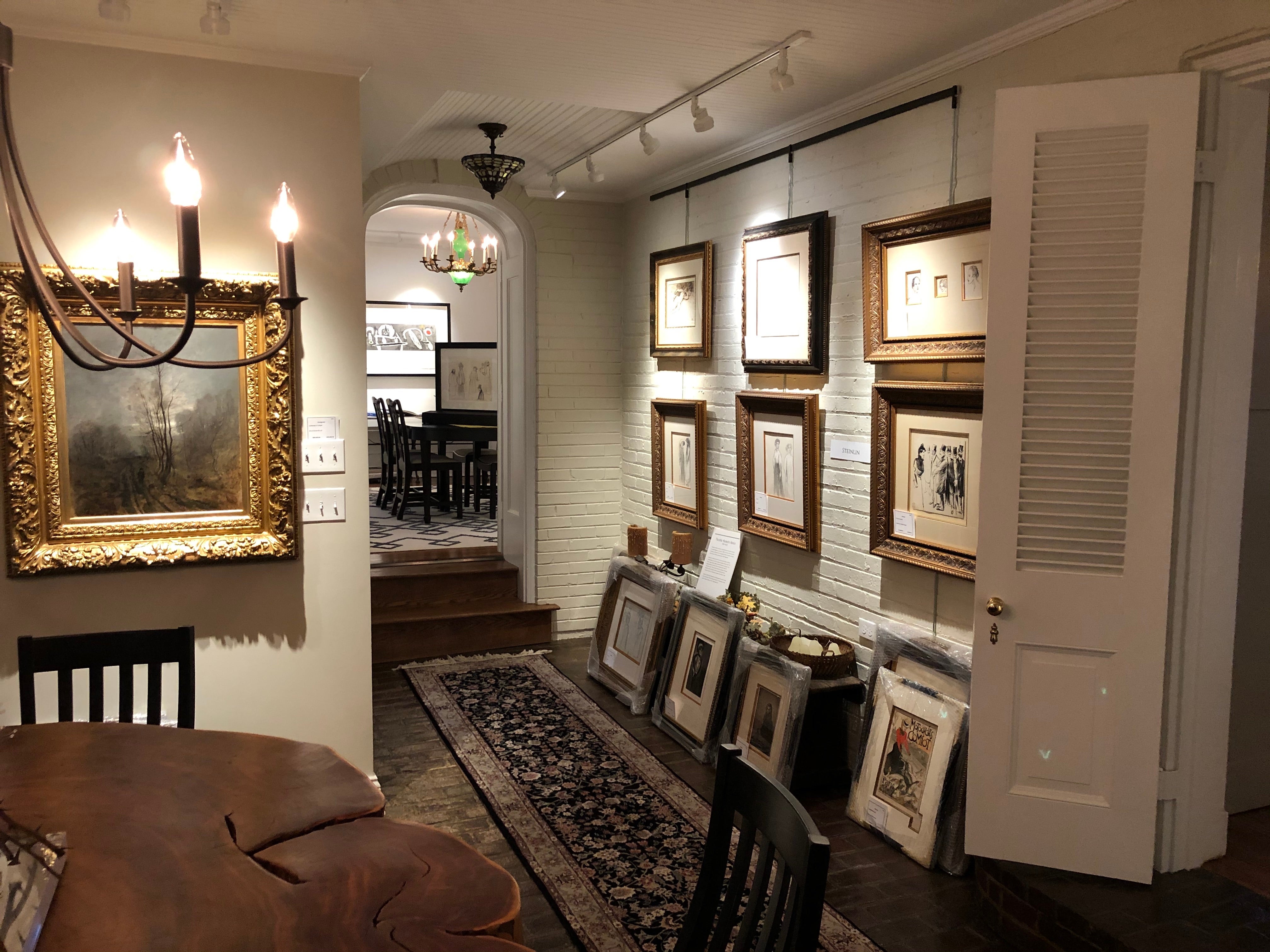
About the Seller
5.0
Vetted Seller
These experienced sellers undergo a comprehensive evaluation by our team of in-house experts.
Established in 1994
1stDibs seller since 2020
36 sales on 1stDibs
- ShippingRetrieving quote...Ships From: Hinsdale, IL
- Return PolicyA return for this item may be initiated within 14 days of delivery.
More From This SellerView All
- "Dame a la Toque", fabulous drypoint etching by Paul Cesar HelleuBy Paul César HelleuLocated in Hinsdale, ILHELLEU, PAUL CÉSAR (1859 - 1927) "La Dame a la Toque" (Lady in Fur Hat) Montesquiou XXXVI, c. 1906 Drypoint printed in colors on pale cream wove paper Signed in black crayon lower ...Category
Early 20th Century Post-Impressionist Portrait Prints
MaterialsDrypoint
- "Madame Georges Menier" Portrait, by Paul Cesar HelleuBy Paul César HelleuLocated in Hinsdale, ILHELLEU, PAUL CÉSAR (1859 -1927) "MADAME GEORGES MENIER" Montesquiou XXI Drypoint in colors, c. 1900 Signed in pencil, lower right Printed on wove paper Full...Category
Early 20th Century Art Nouveau Portrait Prints
MaterialsDrypoint
- "Fillette Assise de Profil a Gauche" (Mlle. P), Paul Cesar HelleuBy Paul César HelleuLocated in Hinsdale, ILHELLEU, PAUL CÉSAR (1859 -1927) "Fillette Assise de Profil àGauche (Mlle. P) (Profile of a Seated Girl to the left) Drypoint in colors, c. 1895 Signed in pe...Category
1890s Abstract Impressionist Portrait Prints
MaterialsDrypoint
- "Teeny" lithograph by Henri MatissseBy (after) Henri MatisseLocated in Hinsdale, ILHENRI MATISSE (1869 – 1954) Teeny Duthuit-Garnaud 723 Linocut, c. 1938 From an edition of 1500 Image Size: 12.2” x 9.5” Published in The Homage to Henri Matisse Published by Galerie d’Art Contemporain de Paris Matisse's striking linocut shows Alexina "Teeny" Duchamp, the second wife of artist and pioneer of the ready-made, Marcel Duchamp. She was married to Pierre Matisse, Henri Matisse's eldest son, first and they had three children, Jacqueline, Paul and Peter. They separated in 1949 but Matisse was incredibly fond of his daughter-in-law until his death in 1954. Henri Matisse (French, 1869-1954) is primarily known as the founder of the Fauvist movement, a result of Impressionism, whose works fundamentally altered the course of Modern Art in the late 20th Century. Innovative in his original treatment of the human figure and an expressive use of color, Matisse forged his own pictorial language. Matisse's career can be divided into several stylistic periods, but he remained focused on discovering “the essential character of things” through his art. Matisse considered his drawing to be a very intimate means of expression. The method of artistic execution — whether it was charcoal, pencil, crayon, etcher’s burin, lithographic tusche or paper cut — varied according to the subject and personal circumstance. His favorite subjects were evocative or erotic — the female form, the nude figure or a beautiful head of a favorite model. Matisse’s etchings...Category
1930s Fauvist Portrait Prints
MaterialsLithograph, Linocut
- "MARIS STELLA" from "L'estampe Moderne"Located in Hinsdale, ILGUYON, MAXIMILIENNE (1868-1903) "MARIS STELLA" Lithograph in color, c. 1898-99 Signature in stone “Maximilienne Guyon”; lower right Sheet size: 16” x 12” As published in L’estampe Moderne...Category
1890s Art Nouveau Portrait Prints
MaterialsLithograph
- "Une Mère et Enfant (Jean Renoir)"By Pierre-Auguste RenoirLocated in Hinsdale, ILRENOIR, PIERRE AUGUSTE (1841 -1919) "Une Mère et Enfant (Jean Renoir)" (Mother and Child) Delteil 10, Stella 10 Drypoint in color, 1896 Proof aside from the numbered edition of 100 impressions Published in “L’Album des peintres-graveurs; Ambroise Vollard Signature on the stone “Renoir” 10” x 7 3/4” Very fine impression on laid paper Renoir’s interest in the mother and child theme was awakened with the birth of his first son Pierre in 1885. In 1894 their second son, Jean, was born. This was the inspiration for this particular etching created when Jean was just two years old. Renoir was interested in Rubens and Delacroix’s rich use of color and loose rounded form which he observed in the Louvre in Paris. His appreciation is evident in this printThe simple positioning of the figures is structurally balanced, and shows Renoir looking back to Raphael’s Virgin and Child paintings...Category
1880s Impressionist Portrait Prints
MaterialsEtching
You May Also Like
- La Marchande des Quatres-SaisonsBy Edgar ChahineLocated in Middletown, NYEtching with drypoint on cream wove paper, 11 3/4 x 13 3/4 inches (297 x 347 mm), full margins. Signed in pencil and numbered 32/40, lower margin. Minor mat tone and several small lo...Category
Early 20th Century Post-Impressionist Portrait Prints
MaterialsHandmade Paper, Rag Paper, Drypoint, Etching
- La Couseuse (The Seamstress)By Jacques VillonLocated in New York, NYJacques Villon (1875-1963), La Couseuse (The Seamstress), drypoint, 1905, signed in pencil lower right margin. Reference: Ginestet and Pouillon 147, Aub...Category
Early 1900s Post-Impressionist Portrait Prints
MaterialsDrypoint
- "Mlle Landsberg" (grade planche, pl. 16)By Henri MatisseLocated in Missouri, MO"Mlle Landsberg" (grade planche, pl. 16), 1914 Henri Matisse (French, 1869-1954) Signed and Numbered Lower Right Edition 12/15 Image size: 7 7/8 x 4 5/16 inches Sheet size: 17 11/16 x 12 1/2 inches With frame: 19 1/2 x 14 1/2 inches Henri Matisse came from a family who were of Flemish origin and lived near the Belgian border. At eight o'clock on the evening of December 31, 1869, he was born in his grandparents' home in the town of Le Cateau in the cheerless far north of France. His father was a self-made seed merchant who was a mixture of determination and tightly coiled tension. Henri had no clear idea of what he wanted to do with his life. He was a twenty-year-old law clerk convalescing from appendicitis when he first began to paint, using a box of colors given to him by his mother. Little more than a year later, in 1890, he had abandoned law and was studying art in Paris. The classes consisted of drawing from plaster casts and nude models and of copying paintings in the Louvre. He soon rebelled against the school's conservative atmosphere; he replaced the dark tones of his earliest works with brighter colors that reflected his awareness of Impressionism. Matisse was also a violinist; he took an odd pride in the notion that if his painting eye failed, he could support his family by fiddling on the streets of Paris. Henri found a girlfriend while studying art, and he fathered a daughter, Marguerite, by her in 1894. In 1898 he married another woman, Amelie Parayre. She adopted the beloved Marguerite; they eventually had two sons, Jean, a sculptor and Pierre who became an eminent art dealer. Relations between Matisse and his wife were often strained. He often dallied with other women, and they finally separated in 1939 over a model who had been hired as a companion for Mme. Matisse. She was Madame Lydia, and after Mme. Matisse left, she remained with Matisse until he died. Matisse spent the summer of 1905 working with Andre Derain in the small Mediterranean seaport of Collioure. They began using bright and dissonant colors. When they and their colleagues exhibited together, they caused a sensation. The critics and the public considered their paintings to be so crude and so roughly crafted that the group became known as Les Fauves (the wild beasts). By 1907, Matisse moved on from the concerns of Fauvism and turned his attention to studies of the human figure. He had begun to sculpt a few years earlier. In 1910, when he saw an exhibition of Islamic art, he was fascinated with the multiple patterned areas and adapted the decorative universe of the miniatures to his interiors. As a continuation of his interest in the "exotic", Matisse made extended trips to Morocco in 1912 and 1913. At the end of 1917, Matisse moved to Nice; he would spend part of each year there for the remainder of his life. A meticulous dandy, he wore a light tweed jacket amd a tie when he painted. He never used a palette, but instead squeezed his colors on to plain white kitchen dishes...Category
1910s Fauvist Figurative Prints
MaterialsEtching, Drypoint
- Promenade dans la Neige - Etching by J. Tissot - 1880By James TissotLocated in Roma, ITBeautiful print on verge crème, 2° state on 3, with letters printed in red. Stamp “Lugt 1545”. Little crack and fold on lower left margin of the sheet. Some small traces of oxidati...Category
1880s Post-Impressionist Portrait Prints
MaterialsDrypoint, Etching
- York Road by Ludovic-Rodo Pissarro - Wood engravingBy Ludovic-Rodo PissarroLocated in London, GBYork Road by Ludovic-Rodo Pissarro (1878-1952) Wood engraving 13.2 x 9 cm (5 ¹/₄ x 3 ¹/₂ inches) Initialed and titled in the plate, signed lower right, Ludovic Rodo and numbered lowe...Category
1910s Post-Impressionist Portrait Prints
MaterialsEngraving
- Portrait of Baron Simolin II (large version)By Max BeckmannLocated in Roma, RMMax Beckmann (Leipzig 1884 – New York 1950), Portrait of Baron Simolin II (large version)(1928) Drypoint, 38 x 25 cm (plate), 48 x 40 cm (sheet), signed and dated lower right.Category
1920s Expressionist Portrait Prints
MaterialsDrypoint
